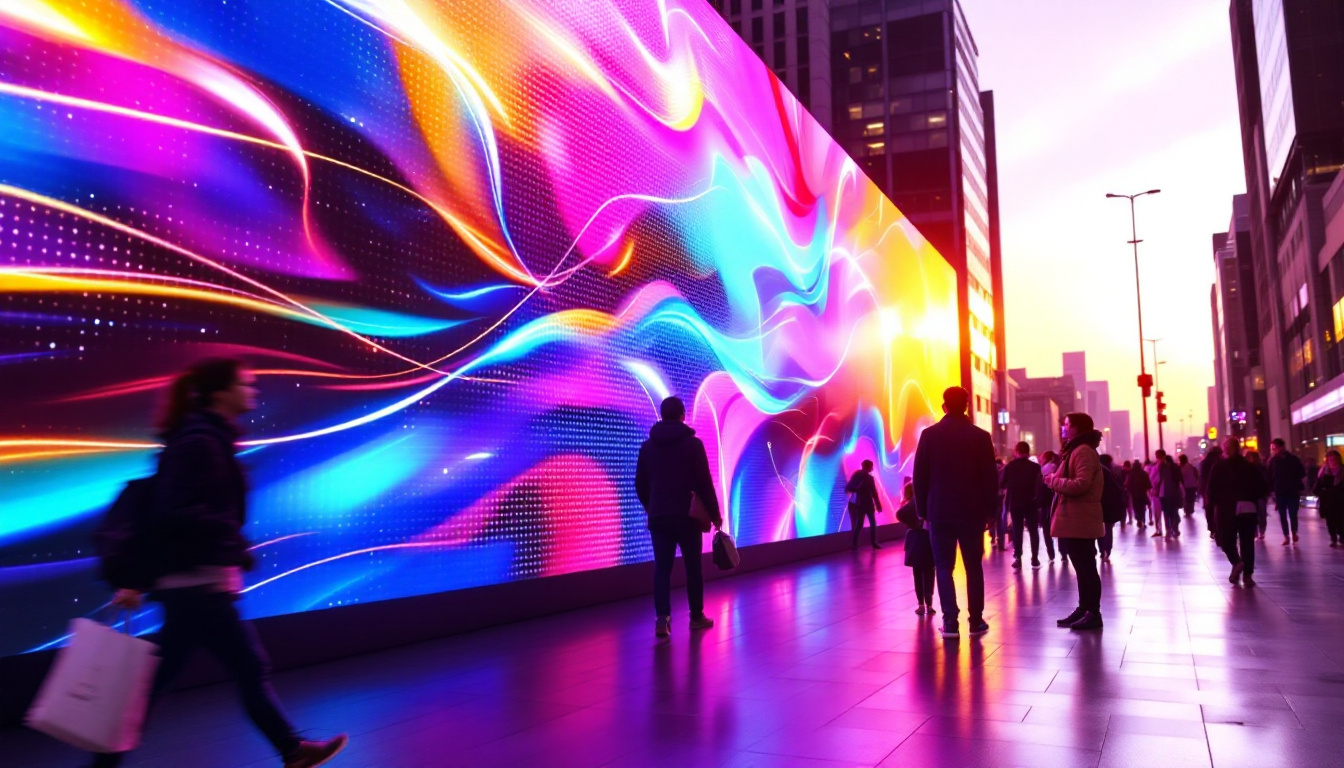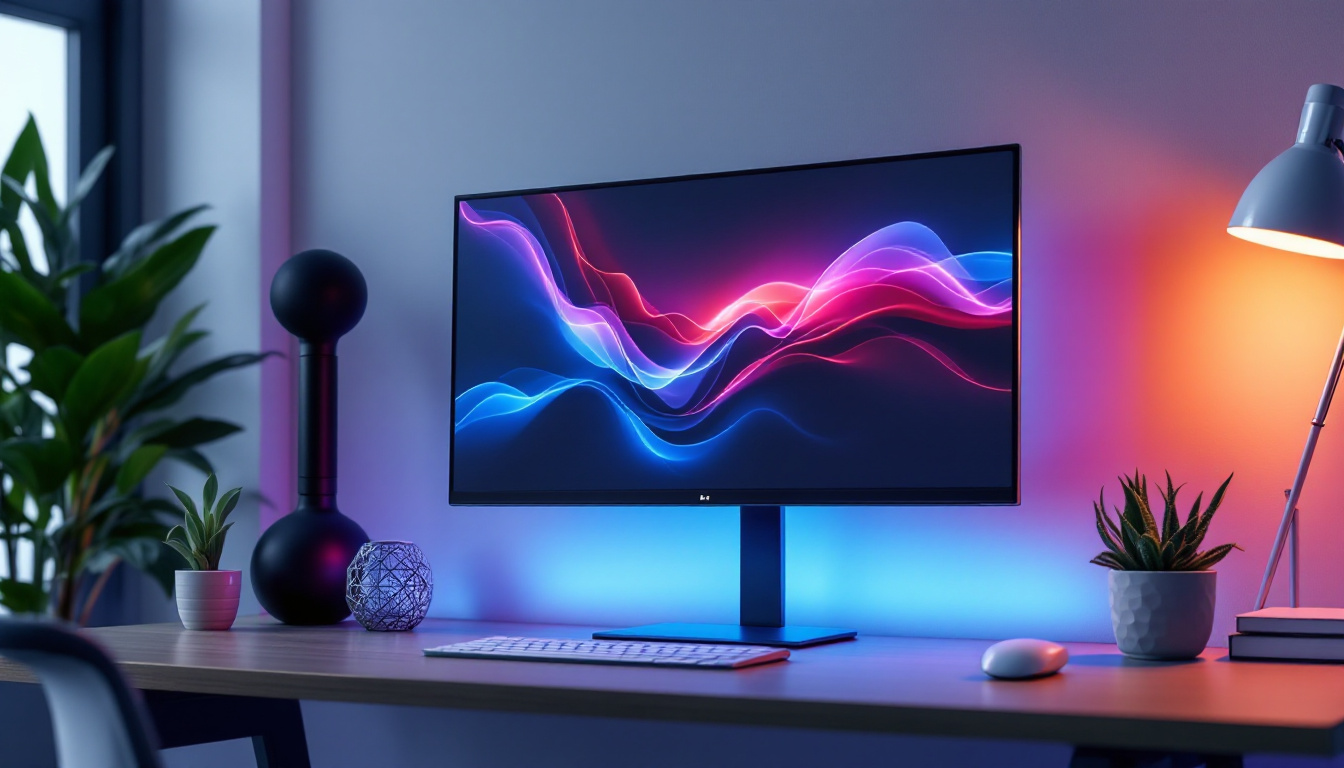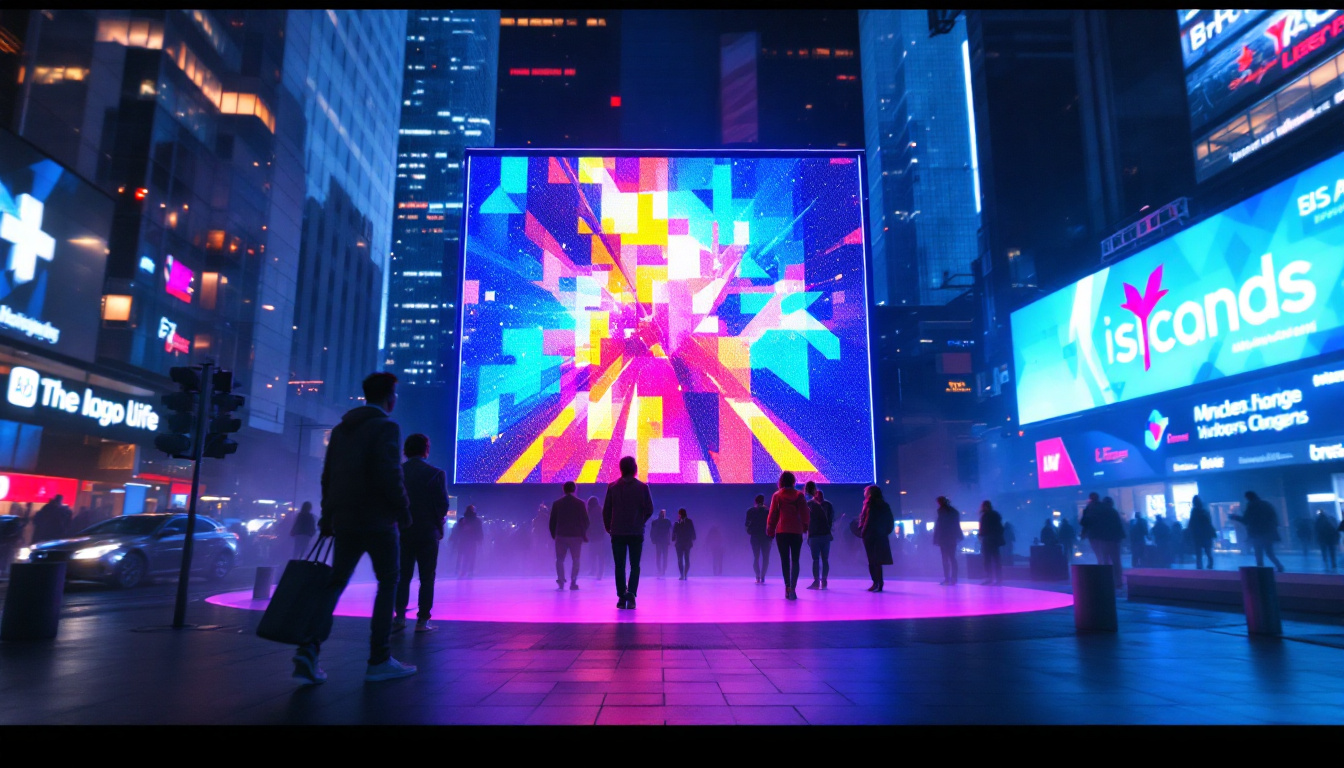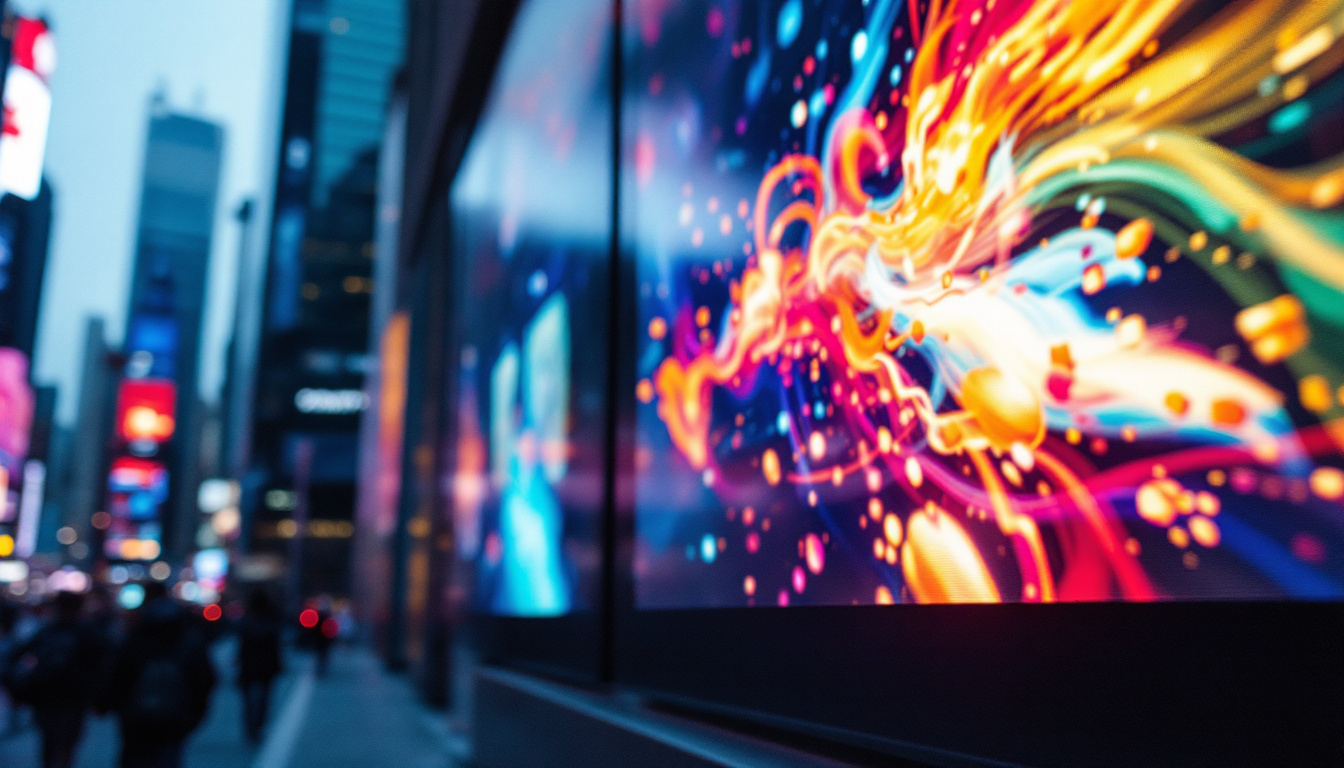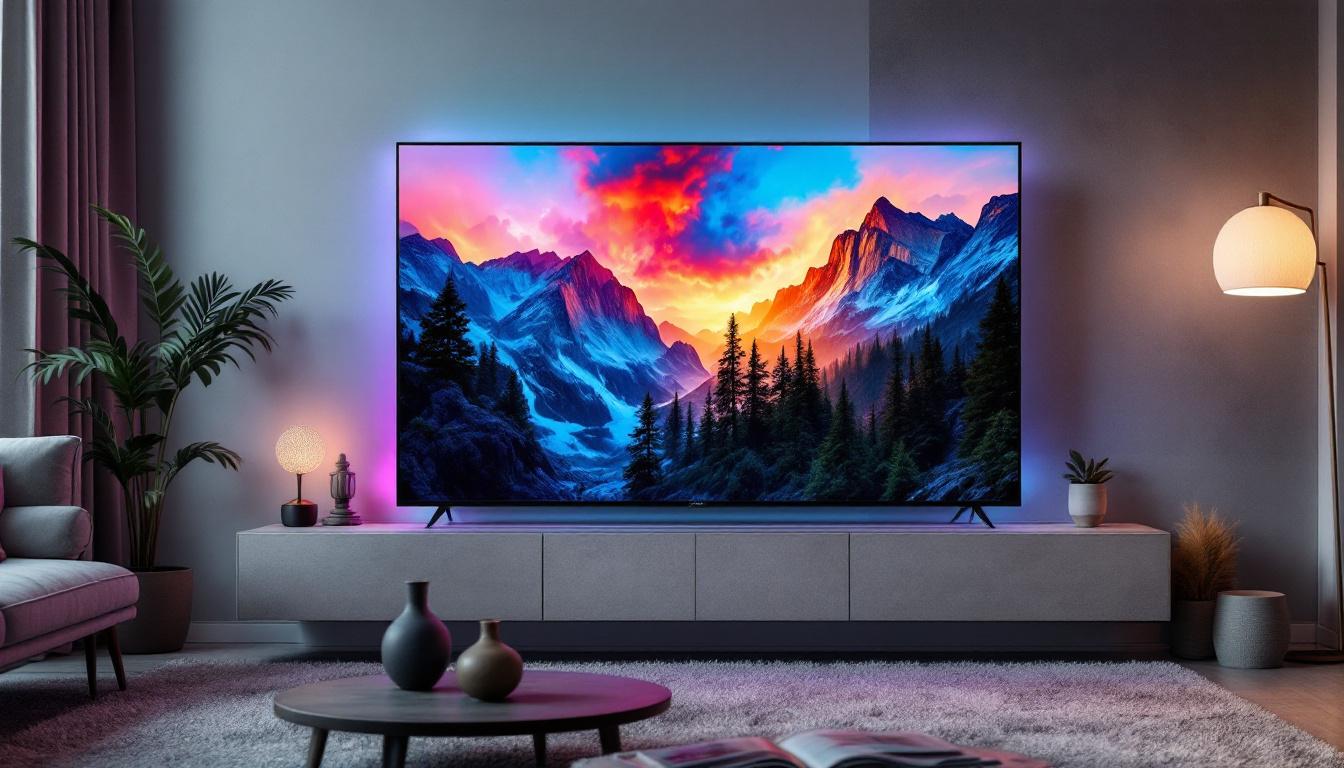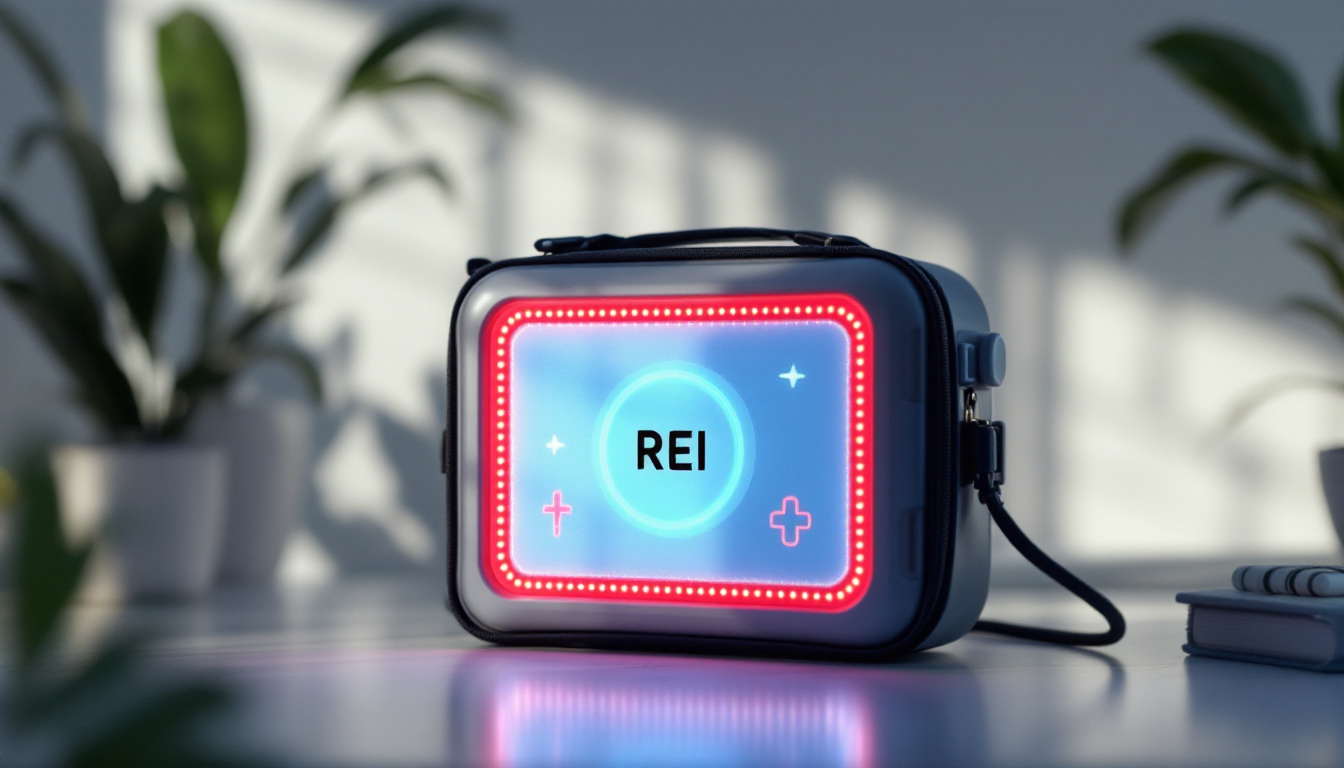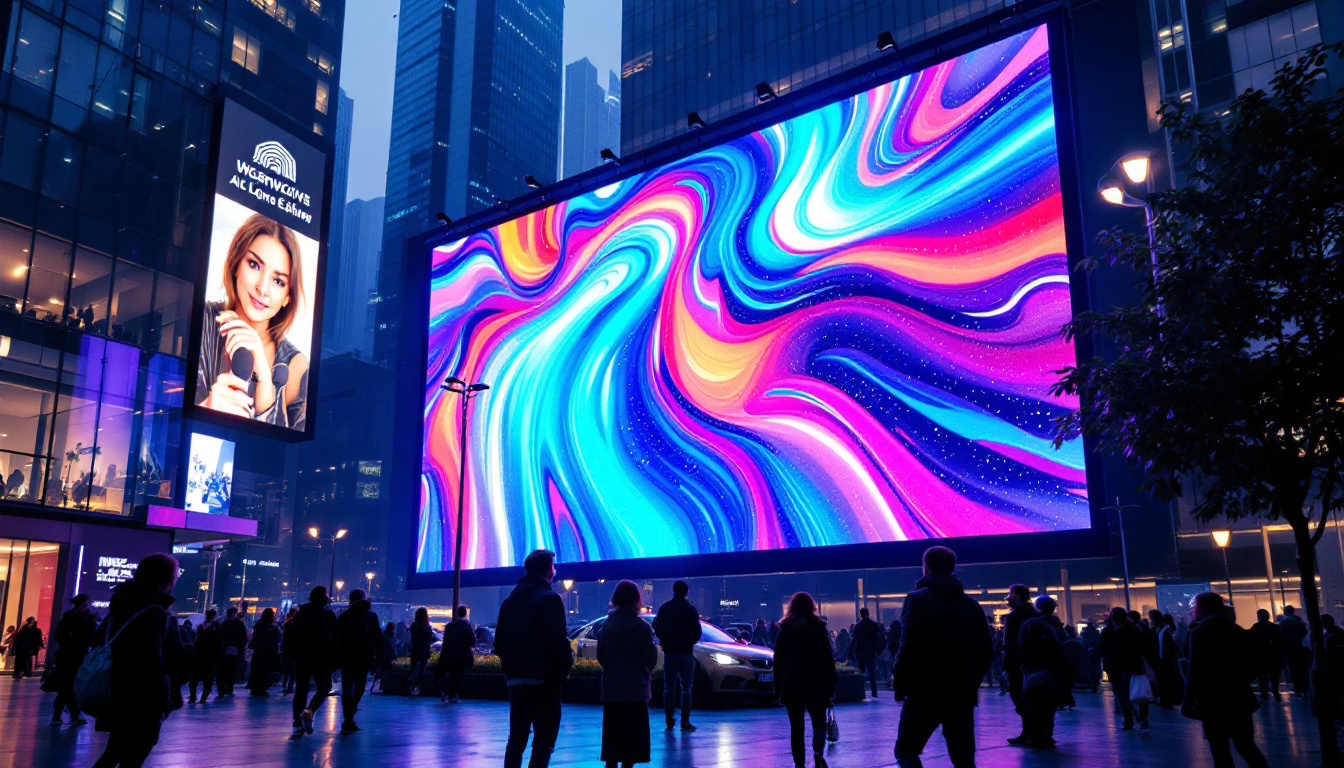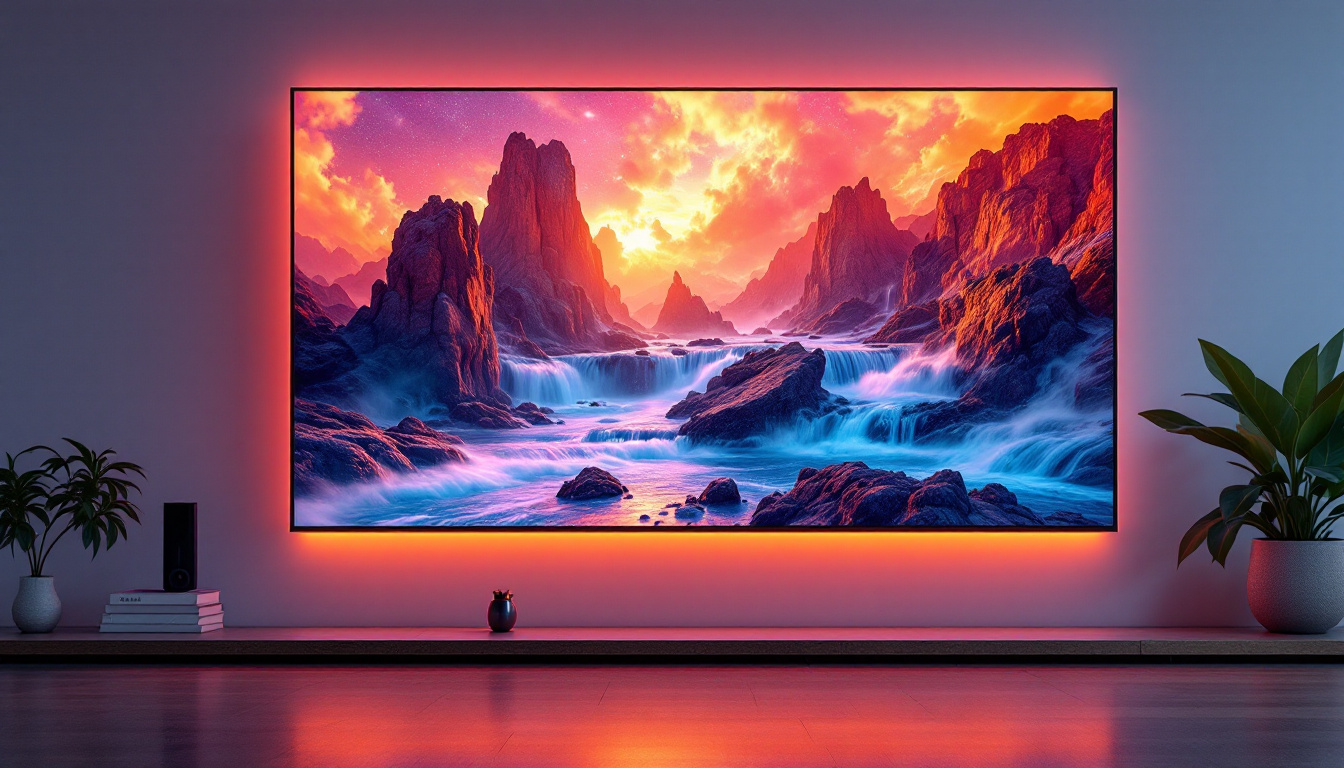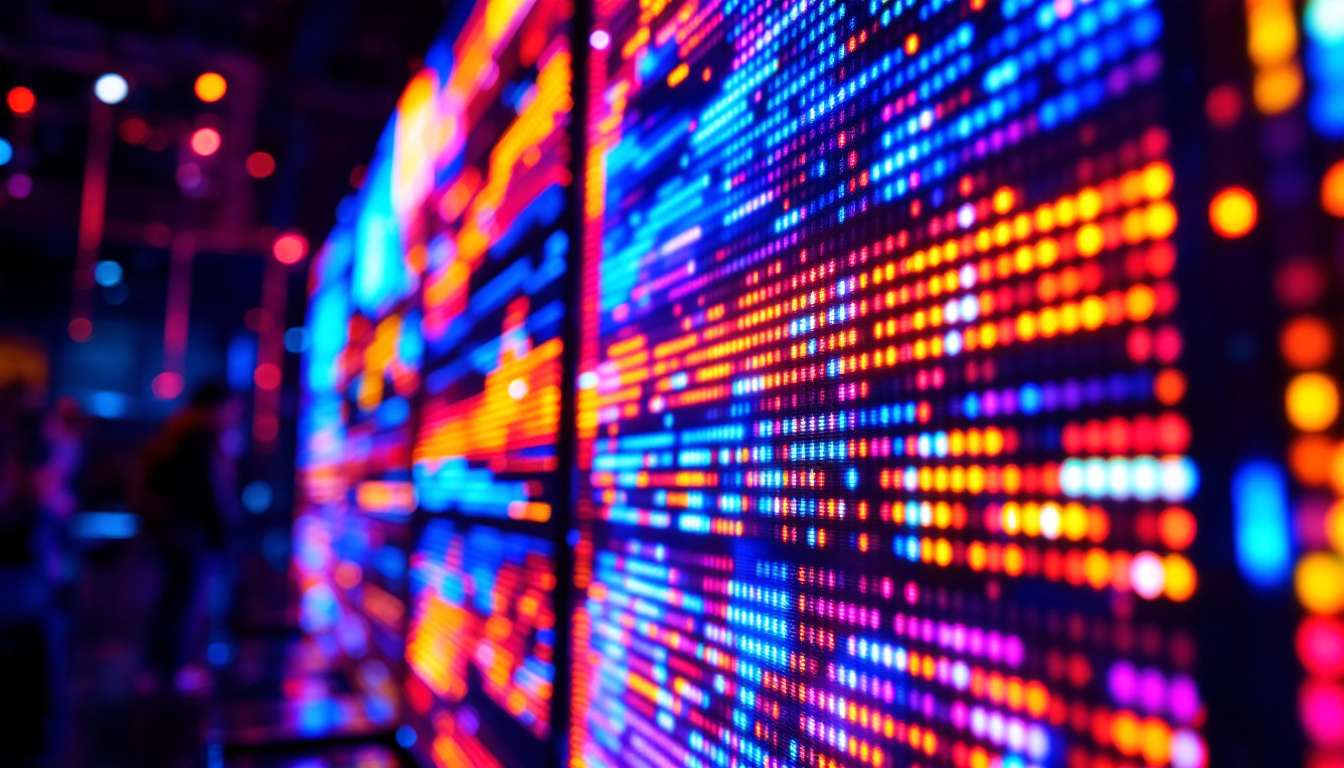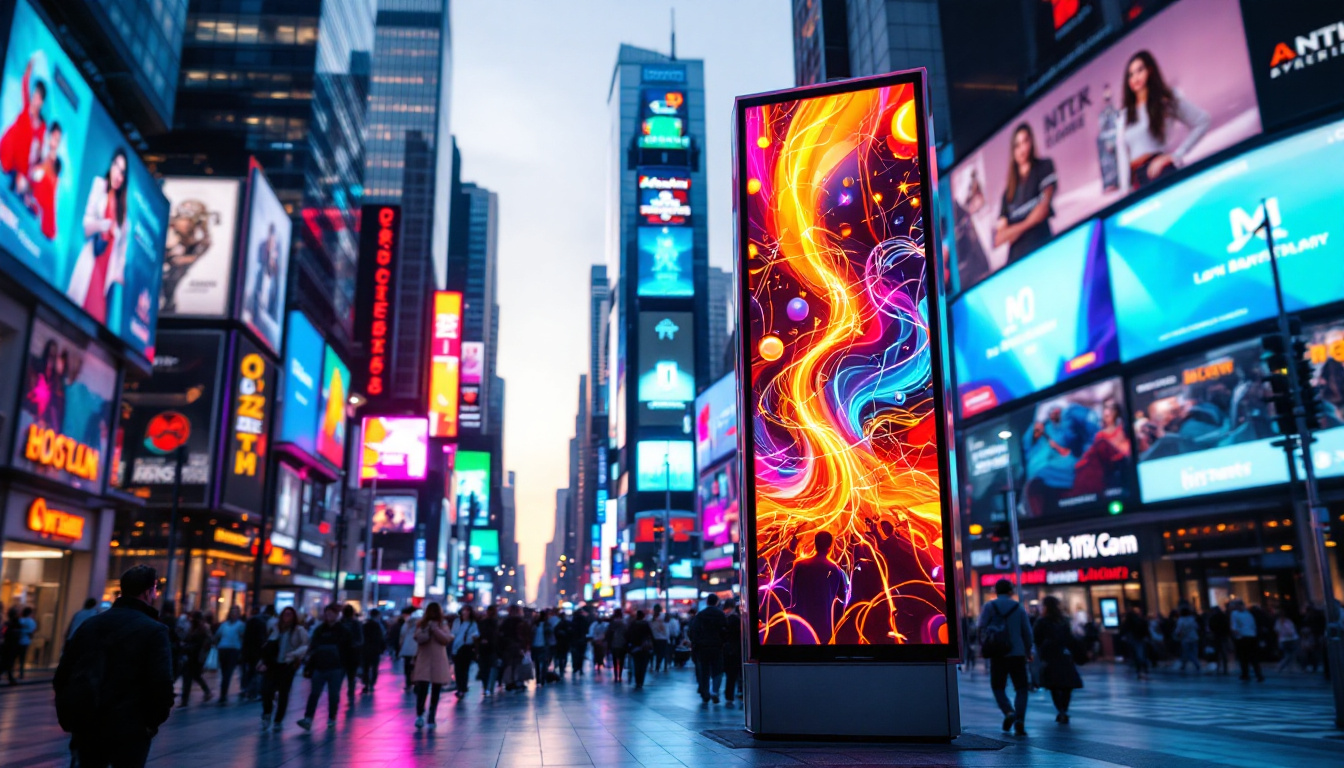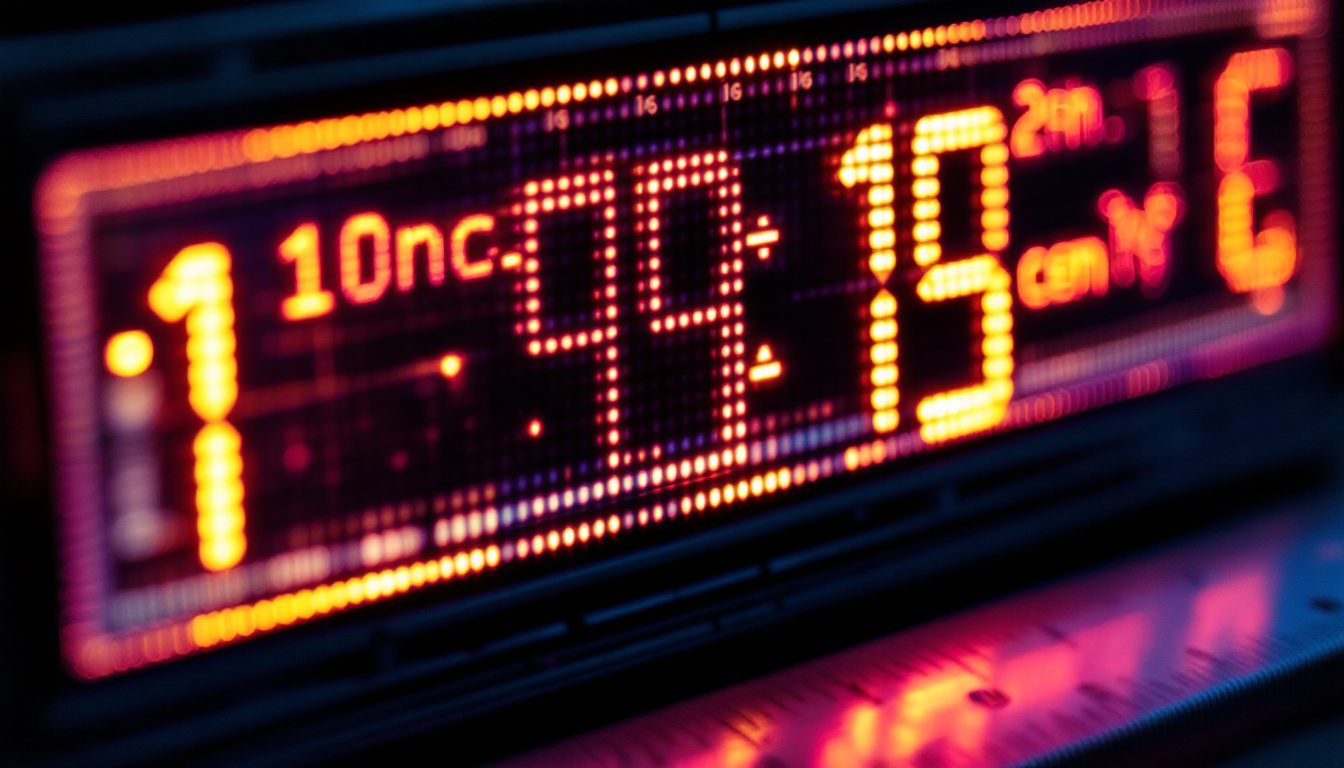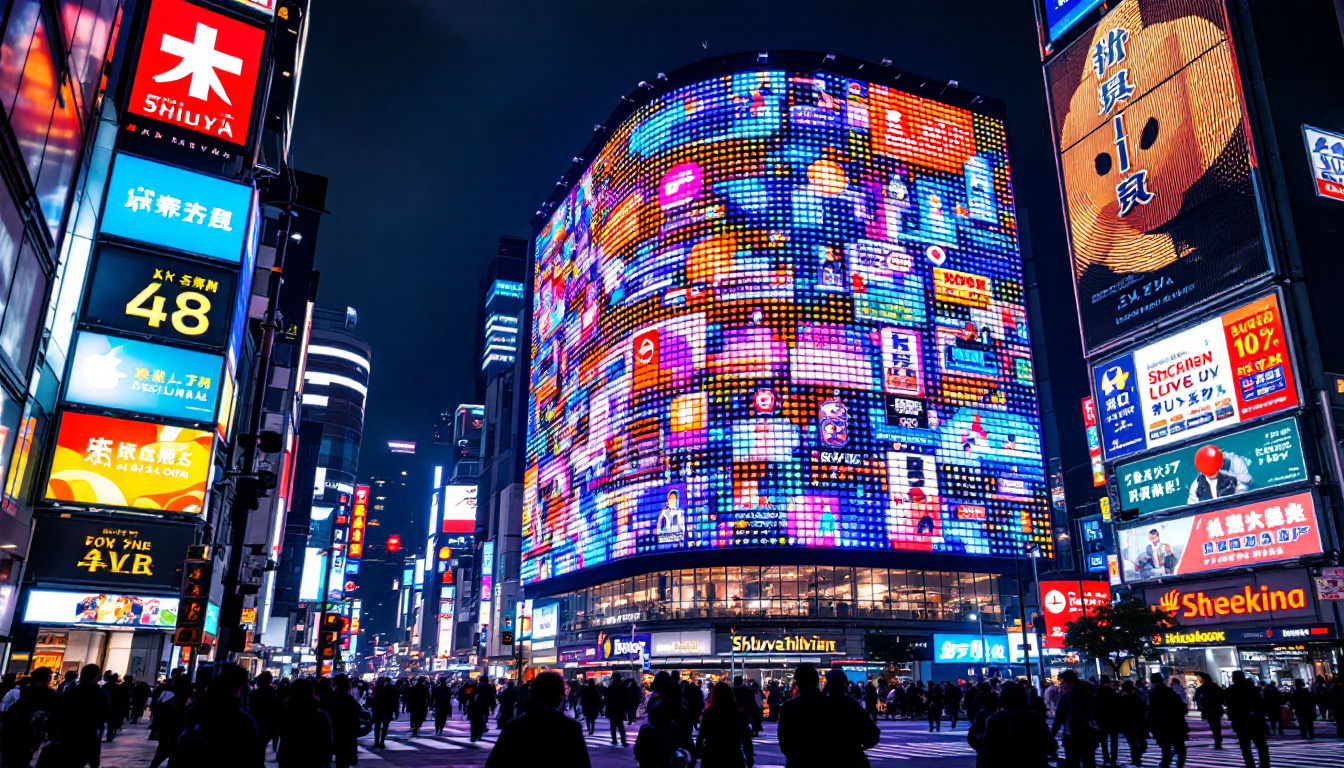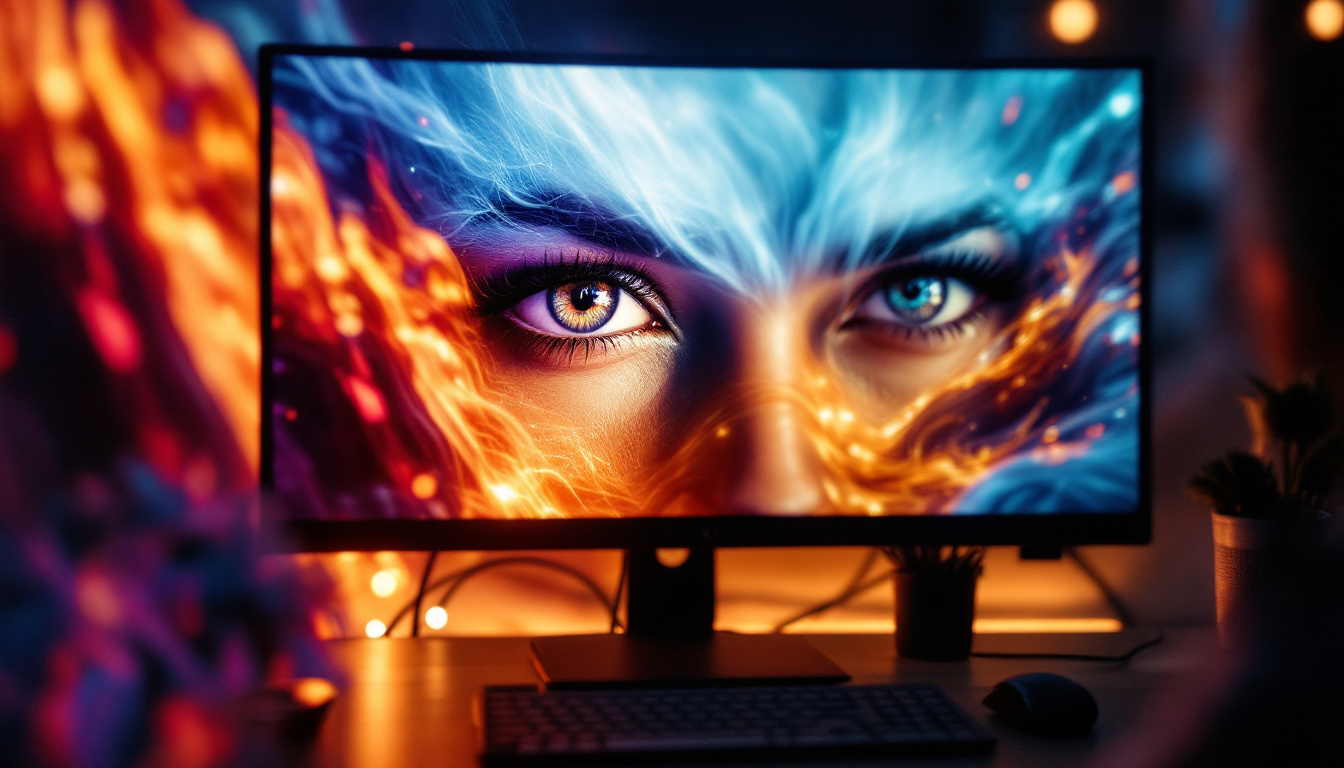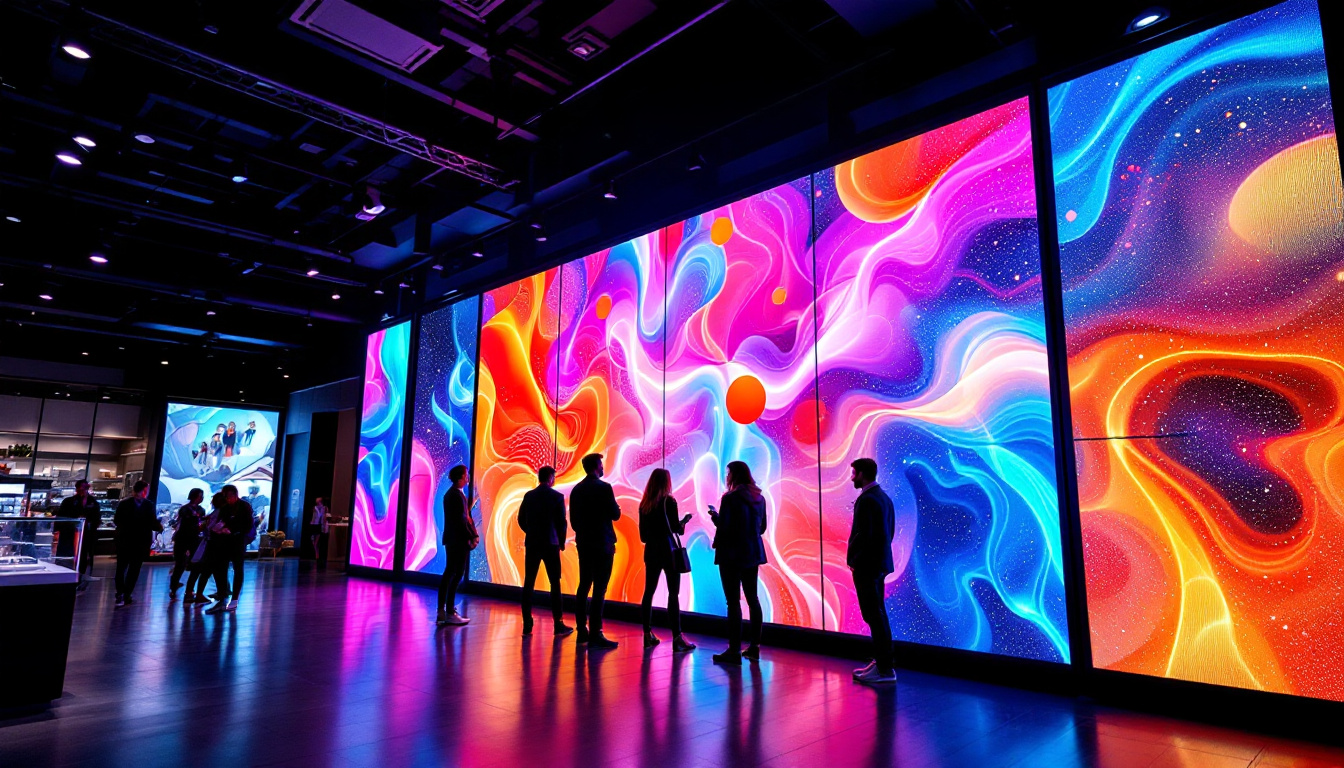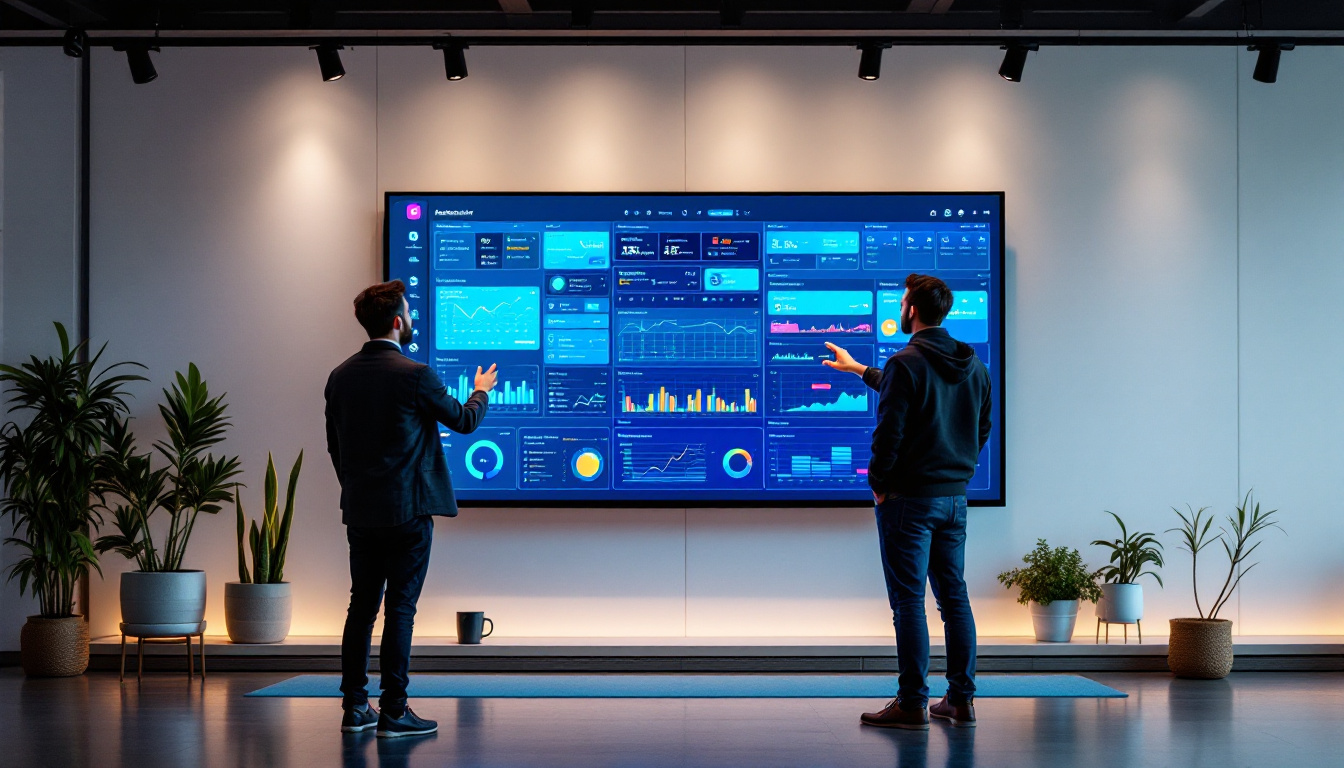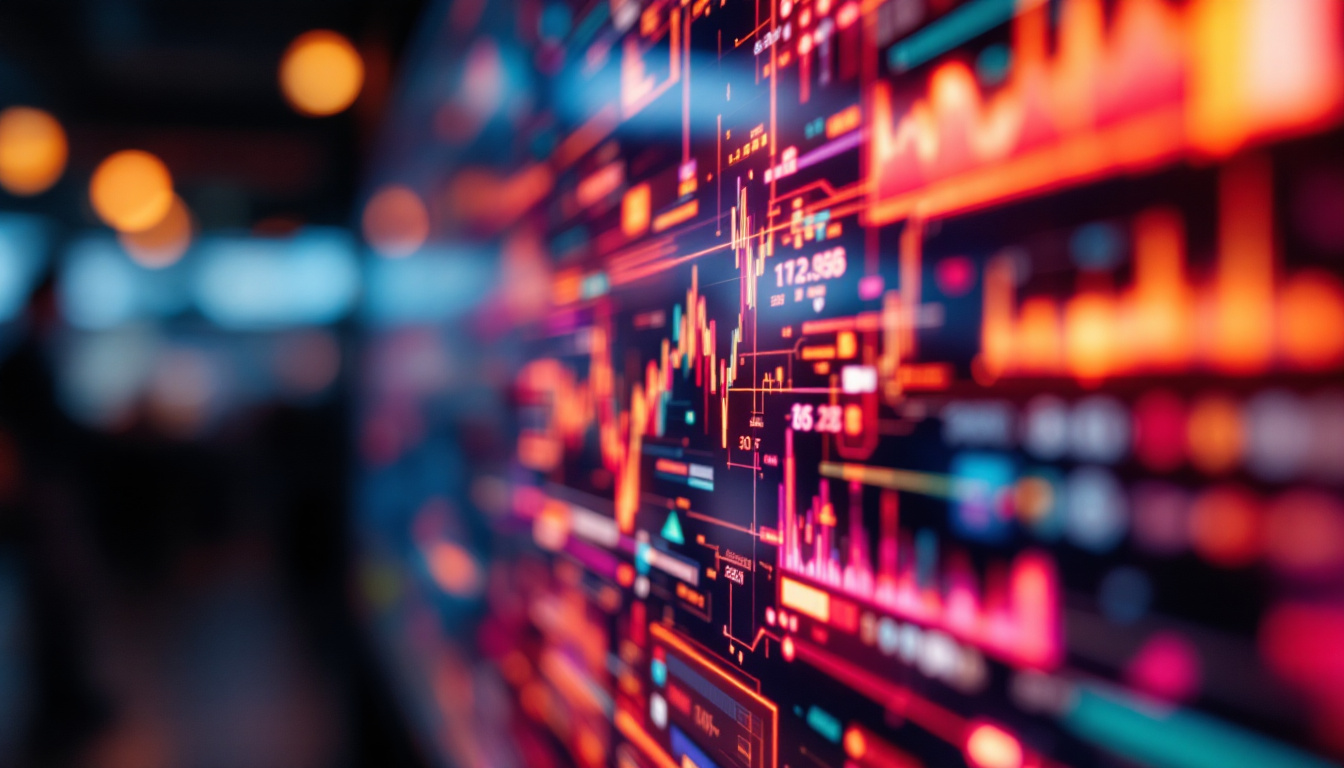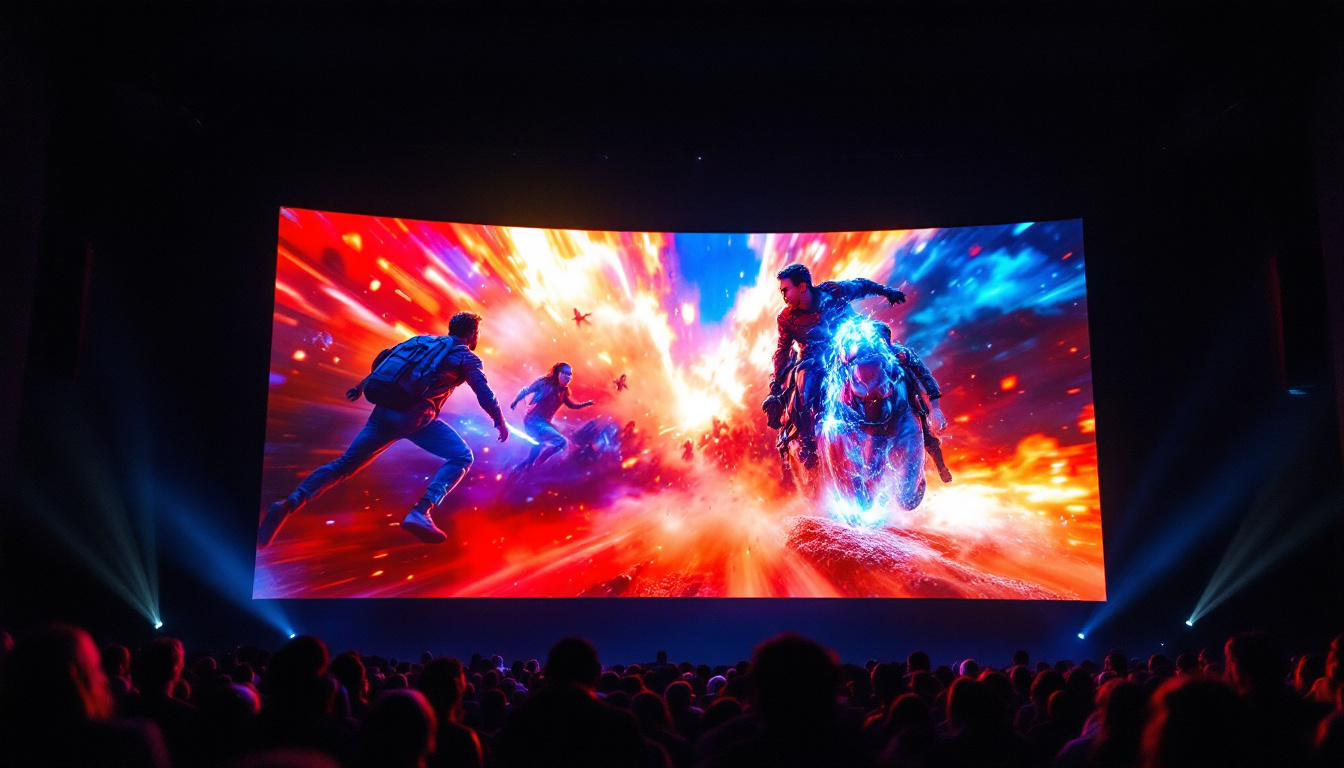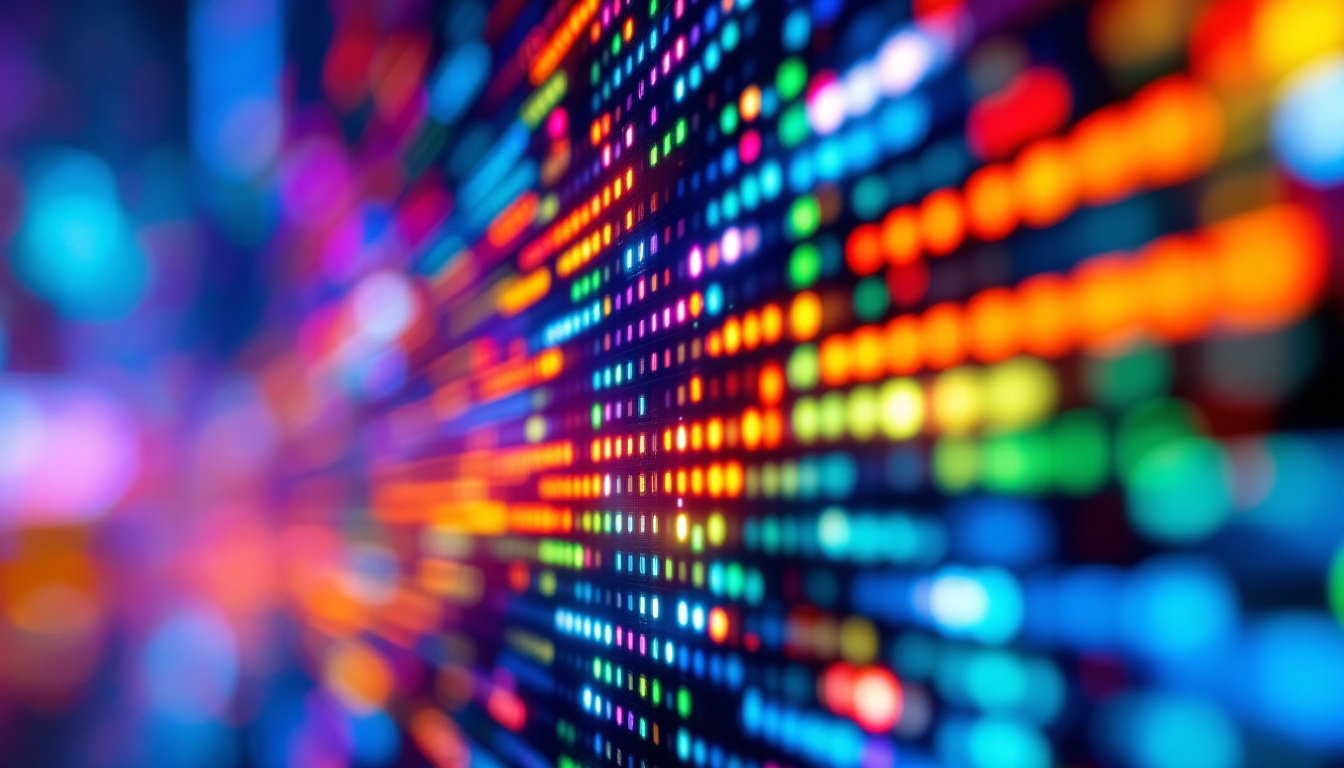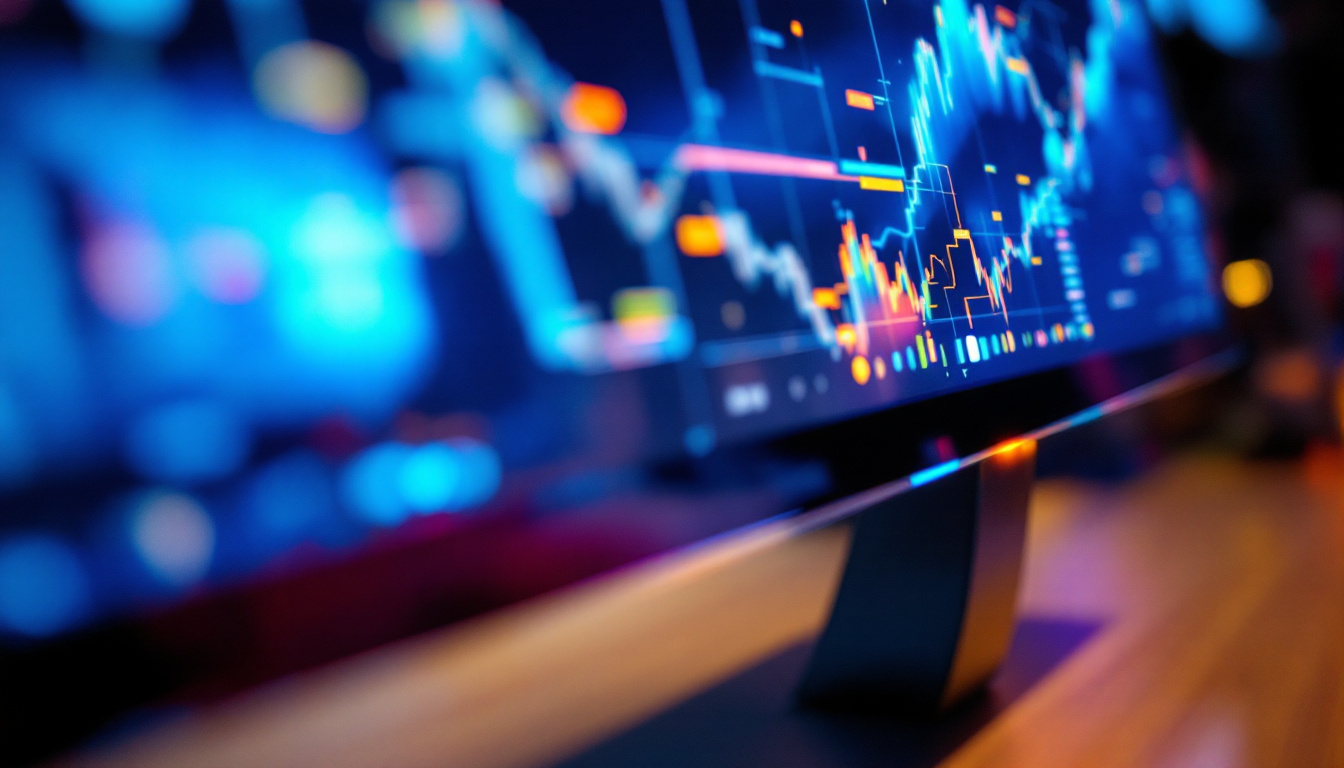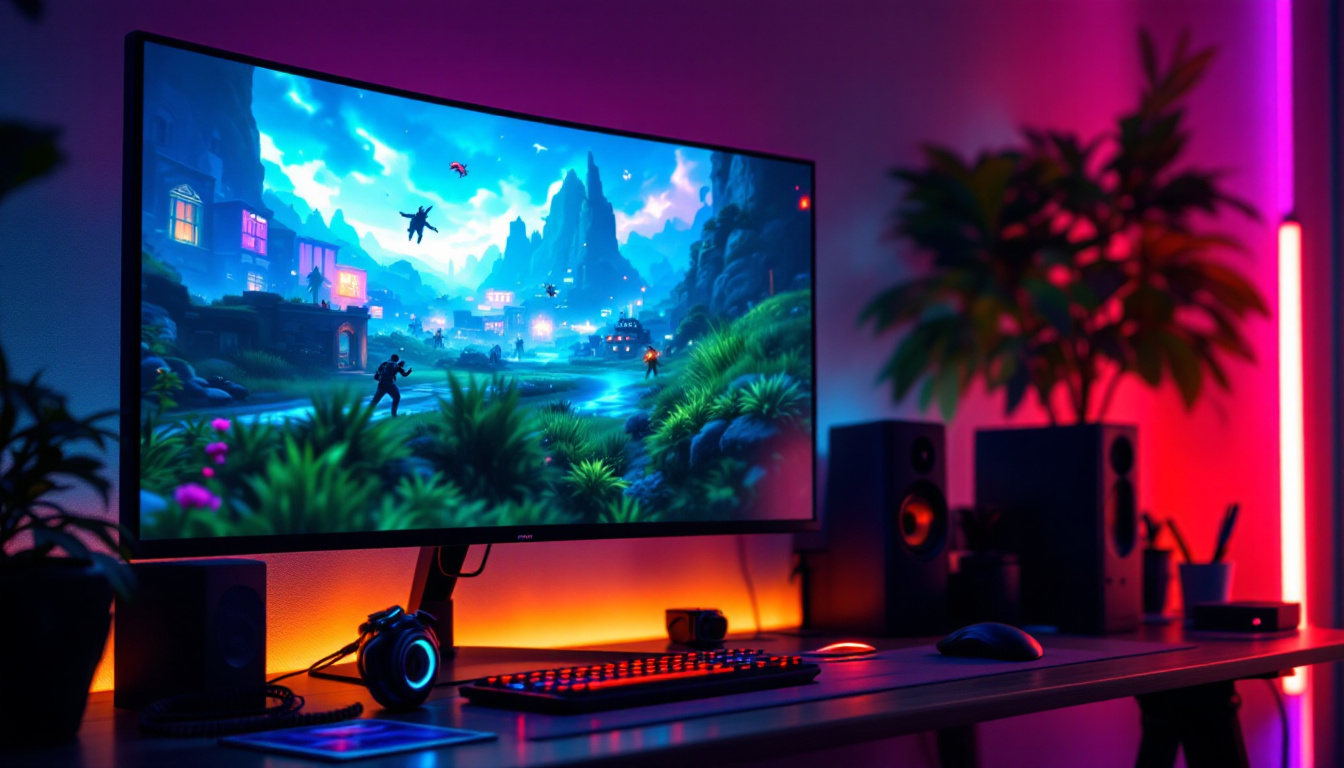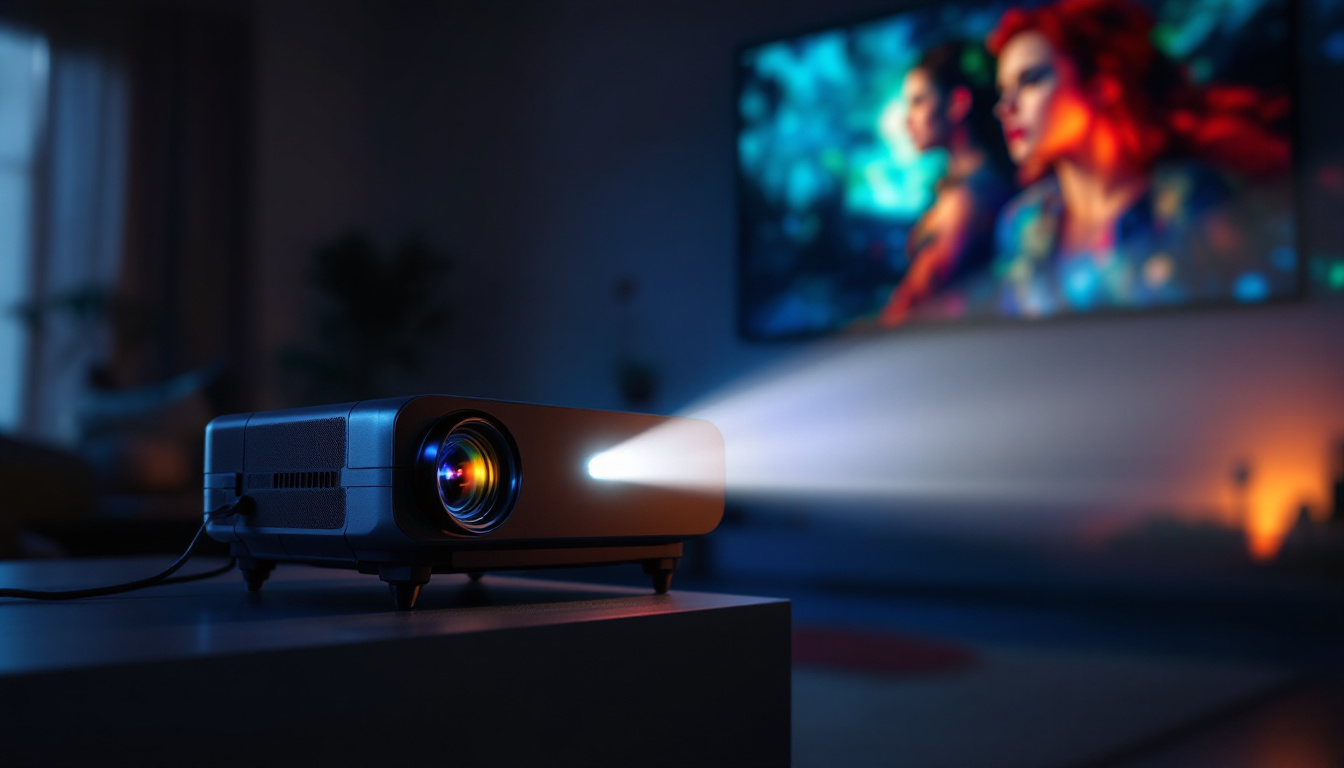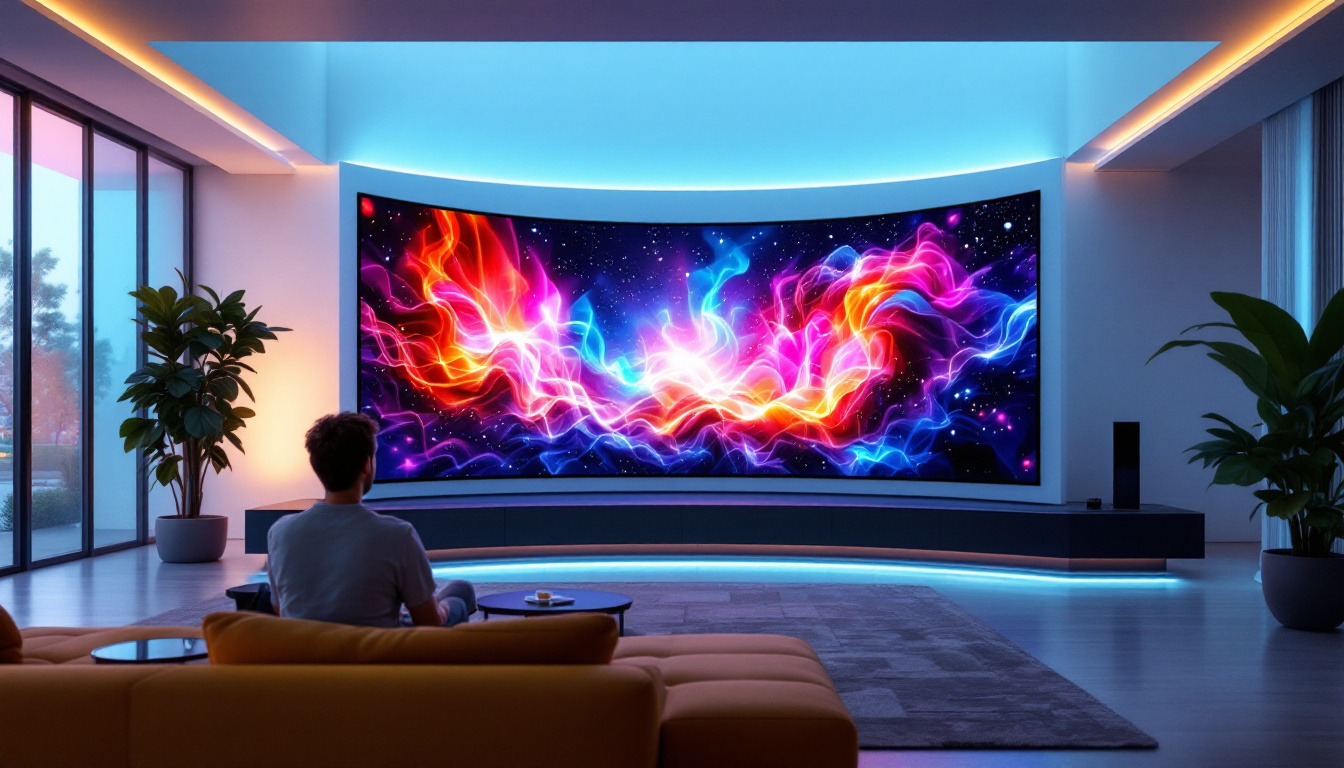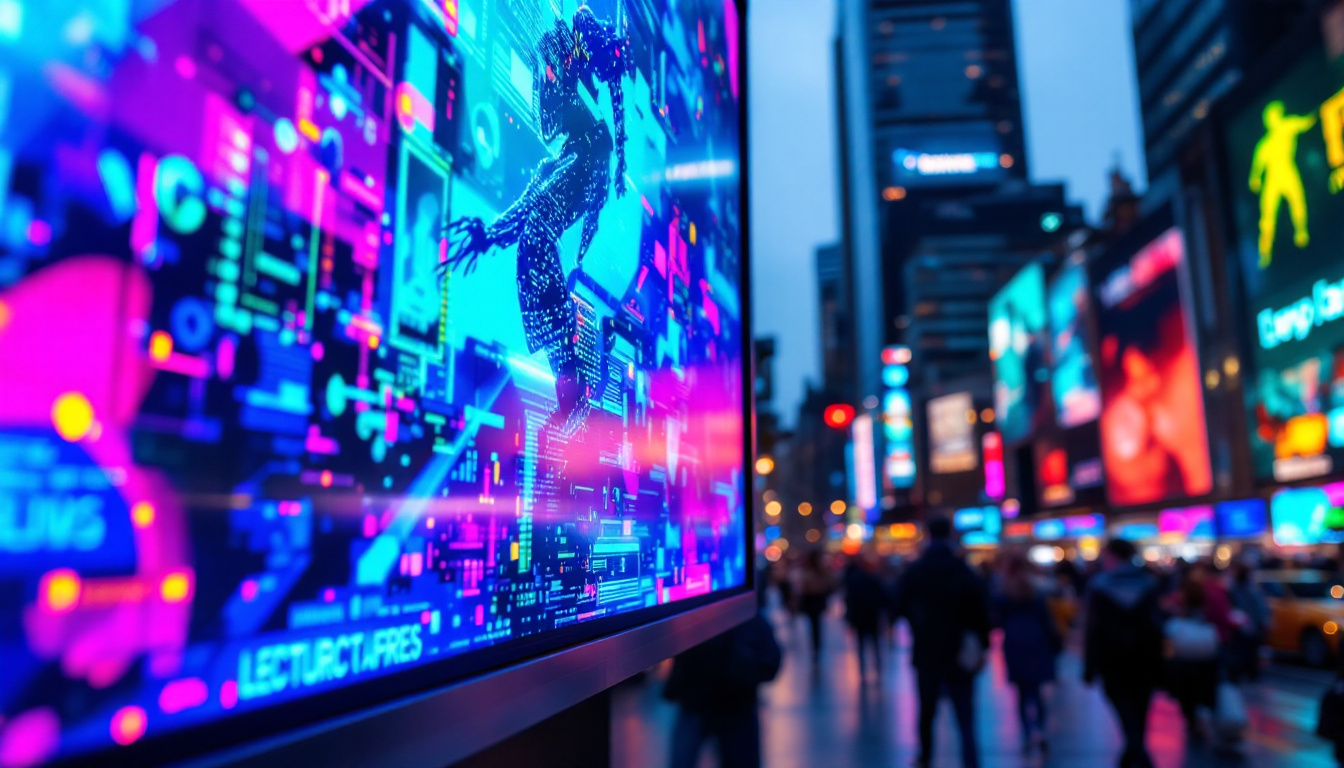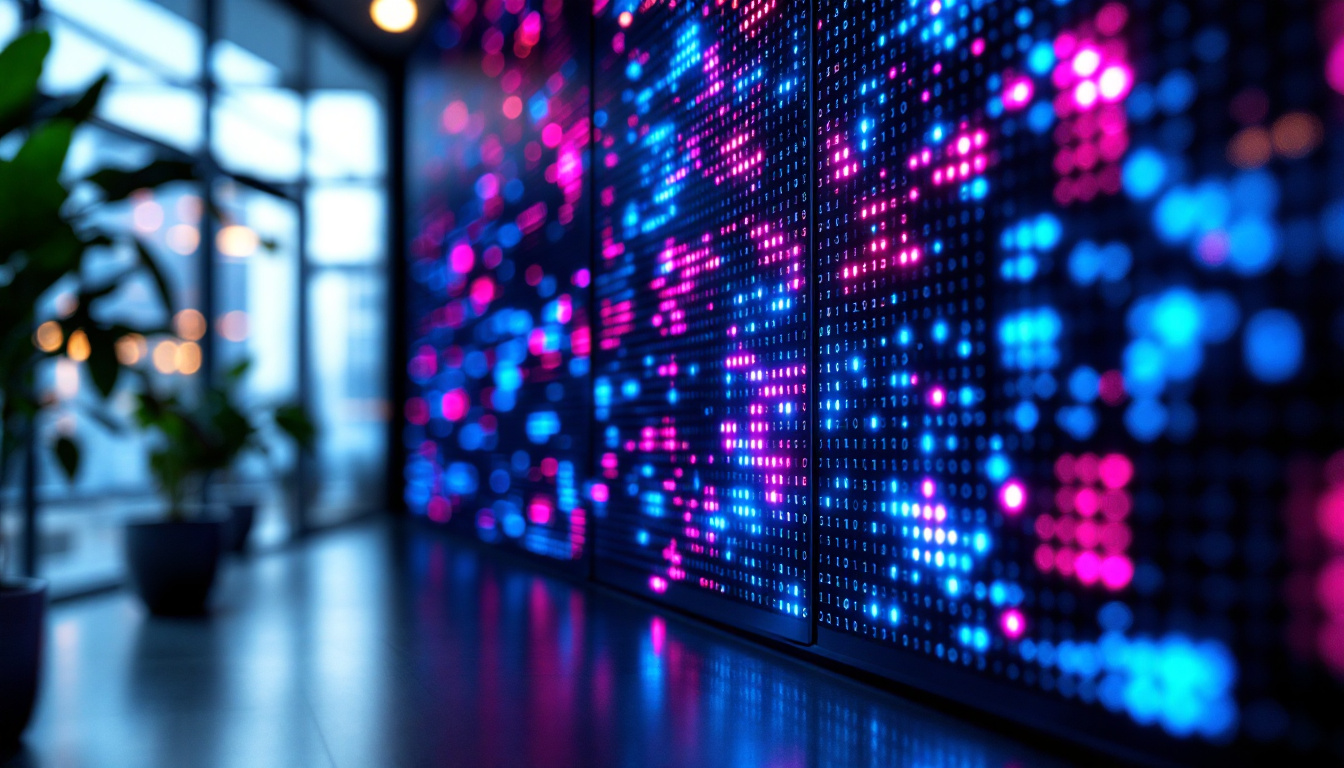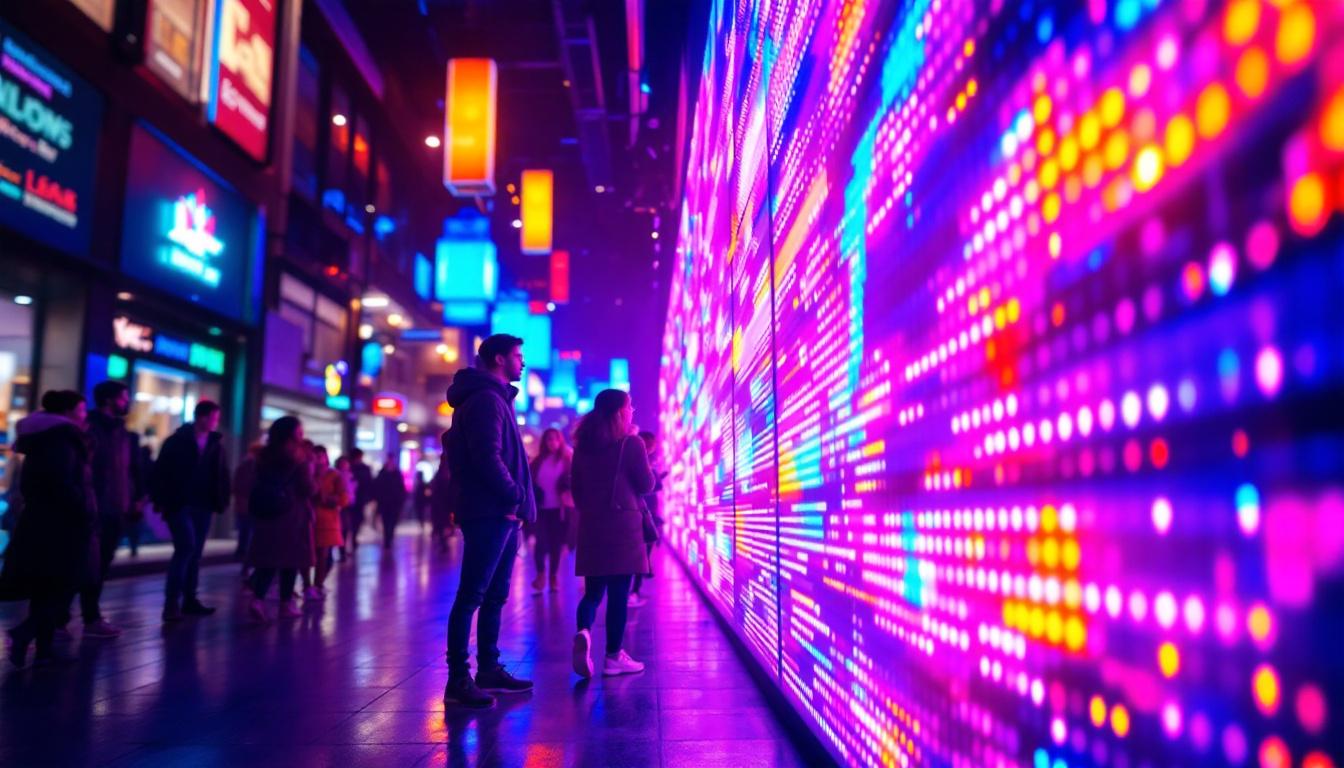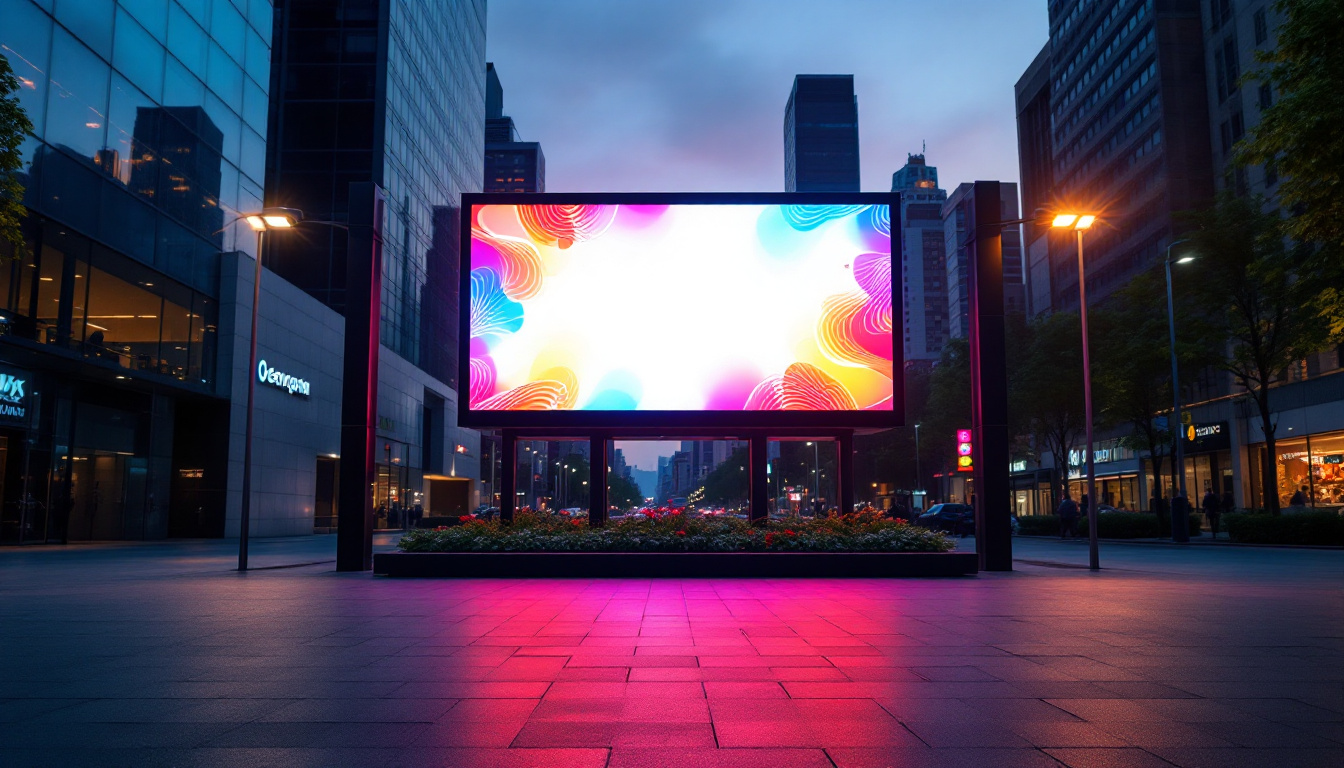In an era where visual communication dominates, LED displays have emerged as a pivotal technology in various industries. From advertising to public information systems, these displays are transforming how messages are conveyed. This article delves into the intricacies of LED displays, their applications, and the promising career opportunities they present in regional markets.
Understanding LED Technology
Light Emitting Diodes (LEDs) are semiconductor devices that emit light when an electric current passes through them. This fundamental technology is the backbone of LED displays, which are increasingly favored for their brightness, energy efficiency, and versatility.
The Basics of LED Functionality
At its core, an LED display consists of numerous individual LEDs arranged in a grid. Each LED can emit different colors, and by controlling the intensity of these colors, a full spectrum of hues can be produced. This ability allows for vibrant, dynamic visuals that are easily visible even in bright daylight.
LED displays can be categorized into two main types: direct view and rear projection. Direct view displays are made up of clusters of LEDs that form the screen itself, while rear projection systems use LEDs to project images onto a screen from behind. Both types have their unique advantages and applications, making them suitable for various environments. For instance, direct view displays are often used in retail settings where eye-catching visuals can attract customers, while rear projection systems may be preferred in conference rooms for presentations, allowing for a more immersive experience without taking up valuable floor space.
Advantages of LED Displays
One of the most significant advantages of LED displays is their energy efficiency. Compared to traditional display technologies, LEDs consume less power, which translates into lower operational costs over time. Additionally, they have a longer lifespan, often exceeding 50,000 hours, which reduces the frequency of replacements. This longevity not only benefits businesses economically but also contributes to environmental sustainability by minimizing electronic waste.
Moreover, LED displays are known for their superior brightness and contrast ratios. This ensures that images remain clear and vibrant, even in challenging lighting conditions. As a result, they are ideal for outdoor advertising, stadiums, and other high-visibility applications. The technology also allows for flexible designs, enabling displays to be curved or shaped to fit unique architectural features, further enhancing their aesthetic appeal. Furthermore, advancements in LED technology have led to the development of smart displays that can be integrated with sensors and software, allowing for real-time content updates and interactive features that engage audiences in innovative ways.
Applications of LED Displays
The versatility of LED displays has led to their adoption across various sectors. From entertainment to education, the applications are as diverse as they are impactful.
Advertising and Marketing
One of the most prominent uses of LED displays is in advertising. Billboards and digital signage in urban areas utilize LED technology to capture the attention of passersby. The ability to change content dynamically allows advertisers to tailor messages to specific audiences or times of day, enhancing engagement and effectiveness.
Additionally, retail environments are increasingly incorporating LED displays to showcase products and promotions. Interactive displays can engage customers, providing them with information and enhancing their shopping experience. For instance, touch-screen LED displays allow customers to browse through catalogs or view product demonstrations, making the shopping process more engaging and informative. This not only boosts sales but also fosters a more personalized shopping experience, as customers can receive tailored recommendations based on their interactions.
Public Information Systems
LED displays play a crucial role in public information systems. Transportation hubs, such as airports and train stations, utilize LED screens to provide real-time updates on schedules, delays, and other essential information. This enhances passenger experience and improves operational efficiency. The bright, clear visuals of LED technology ensure that information is easily readable from a distance, which is particularly important in busy environments where quick decision-making is necessary.
Furthermore, municipalities use LED displays for public announcements, emergency alerts, and community events. The ability to quickly update content ensures that the public remains informed and engaged. For example, during emergencies, LED displays can relay critical information about safety procedures or evacuation routes, potentially saving lives. In addition, they can promote local events and initiatives, fostering a sense of community and encouraging civic participation.
Entertainment and Events
In the entertainment industry, LED displays have revolutionized how performances are staged. Concerts, theater productions, and sporting events often feature large LED screens that enhance the visual experience. These displays can be synchronized with music and performances, creating immersive environments for audiences. The vibrant colors and high resolution of LED technology bring performances to life, making every event a memorable spectacle.
Additionally, LED technology is used in video walls and immersive installations in museums and galleries, allowing for interactive and engaging exhibits that captivate visitors. These installations can transform static displays into dynamic experiences, where viewers can interact with the content through motion sensors or touch interfaces. This not only enriches the visitor experience but also encourages learning and exploration, making art and history more accessible and engaging for a broader audience. The adaptability of LED displays means they can be tailored to suit various themes and concepts, further enhancing their impact in the cultural sector.
Career Opportunities in LED Display Technology
The growing demand for LED displays has created a wealth of career opportunities in various fields. As industries continue to adopt this technology, professionals with expertise in LED systems are increasingly sought after. The versatility of LED displays has made them a popular choice across sectors such as advertising, entertainment, transportation, and even healthcare, leading to a diverse array of job openings that cater to different skill sets and interests.
Engineering and Design Roles
Engineers specializing in LED technology are at the forefront of innovation. They design and develop new LED products, focusing on improving efficiency, brightness, and color accuracy. This role often requires a background in electrical engineering or a related field, along with a strong understanding of optics and materials science. Engineers also collaborate with research and development teams to explore cutting-edge technologies, such as organic LEDs (OLEDs) and quantum dots, which promise to revolutionize the display industry further.
Designers also play a critical role in creating visually appealing LED displays. They work closely with clients to develop concepts that align with branding and marketing strategies. This requires a blend of creativity and technical knowledge to ensure that the final product is both functional and aesthetically pleasing. Moreover, designers must consider the environment in which the displays will be used, whether it’s a bustling urban setting or an intimate indoor venue, to optimize visibility and engagement. Understanding user experience and incorporating feedback into design iterations is vital for success in this field.
Installation and Maintenance Technicians
As LED displays are installed in various settings, skilled technicians are needed to ensure proper installation and maintenance. These professionals are responsible for setting up the hardware, configuring software, and troubleshooting any issues that may arise. Their expertise ensures that displays function seamlessly, providing high-quality visuals that meet client expectations. Technicians often work in teams, collaborating with engineers and designers to ensure that installations are completed on time and to specification.
With the rapid pace of technological advancement, ongoing training is essential for technicians to stay current with the latest developments in LED technology. This career path offers opportunities for growth, as experienced technicians can move into supervisory or management roles. Additionally, many companies offer specialized training programs that focus on new installation techniques, safety protocols, and advanced troubleshooting methods, further enhancing the skill set of technicians in this evolving field.
Sales and Marketing Professionals
The demand for LED displays has led to a surge in sales and marketing roles within the industry. Professionals in this field are tasked with promoting LED products, understanding customer needs, and providing tailored solutions. Strong communication and negotiation skills are essential, as these roles often involve direct interaction with clients and stakeholders. Successful sales professionals not only need to be persuasive but also must possess a deep understanding of the technical aspects of LED technology to effectively convey the benefits of their products.
Additionally, marketing professionals must stay abreast of industry trends and competitor offerings to effectively position their products in the market. This dynamic environment offers a range of opportunities for those with a passion for technology and innovation. Creative marketing strategies, such as utilizing social media campaigns, virtual demonstrations, and trade shows, are increasingly important as companies seek to capture the attention of potential customers in a crowded marketplace. The ability to analyze market data and customer feedback can lead to more effective campaigns and ultimately drive sales growth.
The Future of LED Displays
The future of LED displays looks promising, with advancements in technology paving the way for even more applications. As industries continue to evolve, the integration of smart technology and connectivity will enhance the functionality of LED displays.
Smart Displays and IoT Integration
With the rise of the Internet of Things (IoT), LED displays are becoming increasingly interconnected. Smart displays can gather data from various sources, allowing for real-time content updates based on audience behavior and environmental conditions. This capability enhances the relevance and effectiveness of advertising and public information systems.
Moreover, the integration of AI and machine learning will enable LED displays to analyze viewer engagement, optimizing content delivery and improving user experience. This evolution will create new opportunities for professionals skilled in data analytics and software development.
Sustainability and Energy Efficiency
As sustainability becomes a top priority for businesses and consumers alike, the LED industry is also focusing on reducing its environmental impact. Innovations in materials and manufacturing processes aim to create more sustainable LED products that consume less energy and have a lower carbon footprint.
Professionals in the field will need to adapt to these changes, incorporating sustainable practices into their work. This shift not only benefits the environment but also aligns with consumer expectations, making sustainability a key driver in the future of LED technology.
Conclusion
LED displays have transformed the landscape of visual communication, offering vibrant, energy-efficient solutions for a wide range of applications. As industries continue to embrace this technology, the career opportunities in the field are expanding, providing pathways for engineers, designers, technicians, and sales professionals alike.
The future of LED displays is bright, with advancements in smart technology and sustainability poised to reshape the industry. For those looking to enter this dynamic field, staying informed and adaptable will be crucial for success in the evolving landscape of LED technology.
Discover LumenMatrix LED Display Solutions
As you consider the vibrant future of LED technology and the myriad of career opportunities it presents, take the next step with LumenMatrix. Explore our innovative LED display modules, designed to elevate your visual communication and captivate your audience. Whether you’re interested in Indoor LED Wall Displays, Outdoor LED Wall Displays, or specialized solutions like Vehicle LED Displays and LED Sports Displays, LumenMatrix has the state-of-the-art technology to bring your vision to life. Check out LumenMatrix LED Display Solutions today and see how we can enhance your brand visibility and create unforgettable visual experiences.

